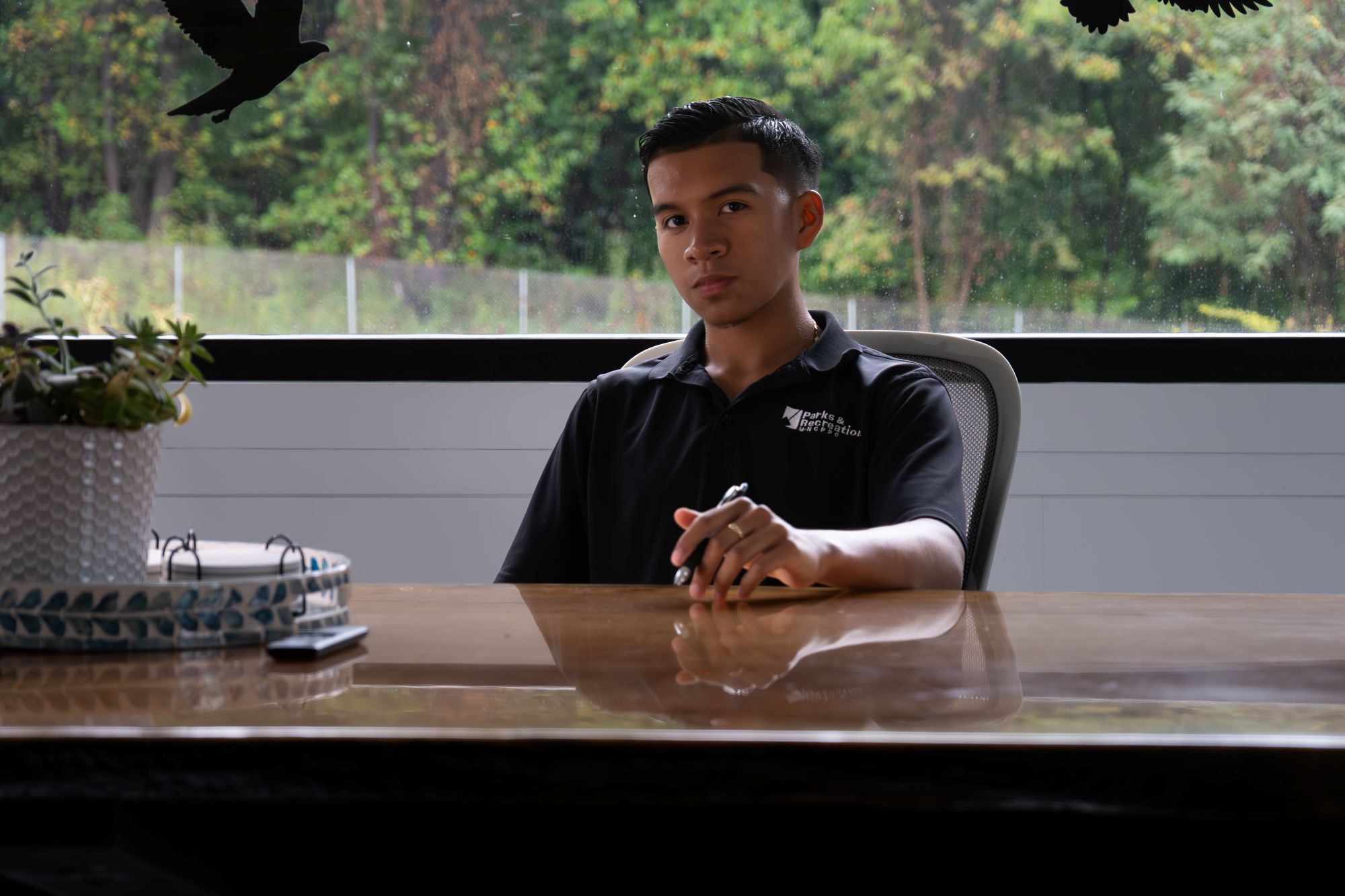Image of Sergio using an angle grinder to carve a log.
Image Credit: PG Parks and Recreation
I could tell you my summer started with mud on my boots and a notebook full of scientific plant names, but what I really remember is the first time I climbed down into a bioretention and saw how water, soil, and plants were doing the work engineers usually get credit for. My name is Sergio Agustin-Joya. I am pursuing a Certificate in Ornamental Horticulture at the Institute of Applied Agriculture and a Bachelor of Science in Architecture at the University of Maryland. This summer I served as the Stormwater Management Inspector at the Maryland-National Capital Parks and Planning Commission, Prince George’s County Department of Parks and Recreation, a bi-county agency that provides parks and recreation services to our community.
On a typical day, I inspected and documented green infrastructure facilities such as rain gardens, bioswales, and areas of conservation landscaping. I learned to look for signs that a system was performing well or needed attention. Was the inlet clogged with sediment? Were native plants thriving or being crowded out by invasives? My inspection notes became action when we weeded, removed sediment, mulched, and in some areas planted to restore function and habitat. I also spent time identifying and removing non-native invasive vines, herbs, and woody plants, which is both satisfying and essential work for long-term ecosystem health.
One of the things I value most about the internship was the mix of fieldwork and collaboration. I attended internal and external meetings where design, maintenance, and community needs were met. Those conversations taught me that sustainability projects are negotiated across multiple fronts, including ecology, engineering, budgeting, and public use. Working with industry professionals, I learned how to translate technical inspection findings into clear recommendations and maintenance plans.
My favorite project was being part of the construction process for the Sustainability Learning Center at Randall Farm. Seeing the mixed-use building, learning garden, urban farm, mural, and outdoor pavilion come together was an education in itself. I was able to apply what I had learned about stormwater systems and native plants in a real-world setting, and I appreciated being included in conversations about how the site would both teach and perform. That project felt like a small blueprint of my long-term ambitions—designing places where the built environment and the natural world support each other.
Skill-wise, I gained practical techniques that I will carry forward. I learned to flame weed safely and efficiently, sharpened my invasive species identification and removal methods, and strengthened my native plant identification. I also improved my site documentation skills, making inspection reports that are systematic, useful, and clear for future maintenance crews. These are technical skills I can put on a resume, but more importantly, they shaped how I think about the lifecycle of landscapes.
My supervisors and co-workers were generous with their feedback, and that perspective meant a lot. Lauren Belle, Environmental Sustainability Coordinator at M-NCPPC, shared that “Sergio brings fresh ideas, creativity, and energy to the work, and in return, he gains skills and perspective that will serve him in any future career path. It’s inspiring to see the next generation of leaders step into this field with such passion and curiosity.” Donald Buckler, Heavy Equipment Supervisor, added, “Sergio consistently demonstrates a strong work ethic and attention to detail in maintaining green infrastructure and managing invasive species, contributing to the health and sustainability of park resources. His proactive approach to inspections, maintenance, and invasive species removal ensures that facilities remain in excellent condition and align with long-term ecological goals”.
This internship changed how I see my future. Working at M-NCPPC opened my eyes to social, environmental, and economic dimensions of sustainability. Whether through conservation landscaping or stormwater management, I’ve come to see sustainability as an integral part of design, not an afterthought. As an architecture student who plans to build a career in the field, I’m eager to weave the fabric of the built environment with the natural world. That means designing places that manage water, support native plants, and serve communities.
I leave the summer with my boots still muddy, my notebook fuller, and my path a little clearer. I am grateful for the mentors and crews who let me learn in the field, and I am excited to keep building a career that makes spaces more resilient, regenerative, and useful for people and wildlife alike.
